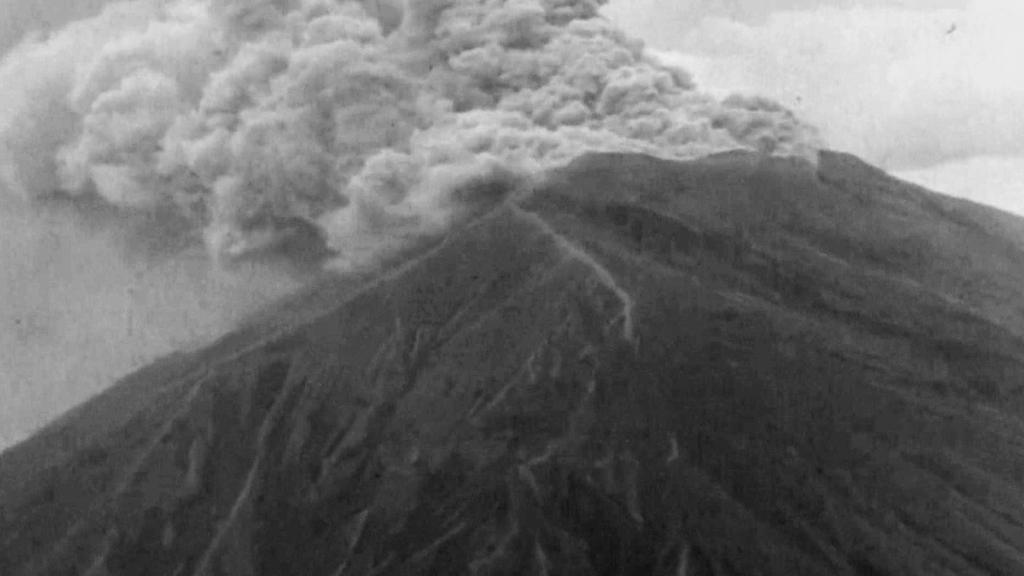Mount Agung: Bali volcano eruption photos explained
- Published
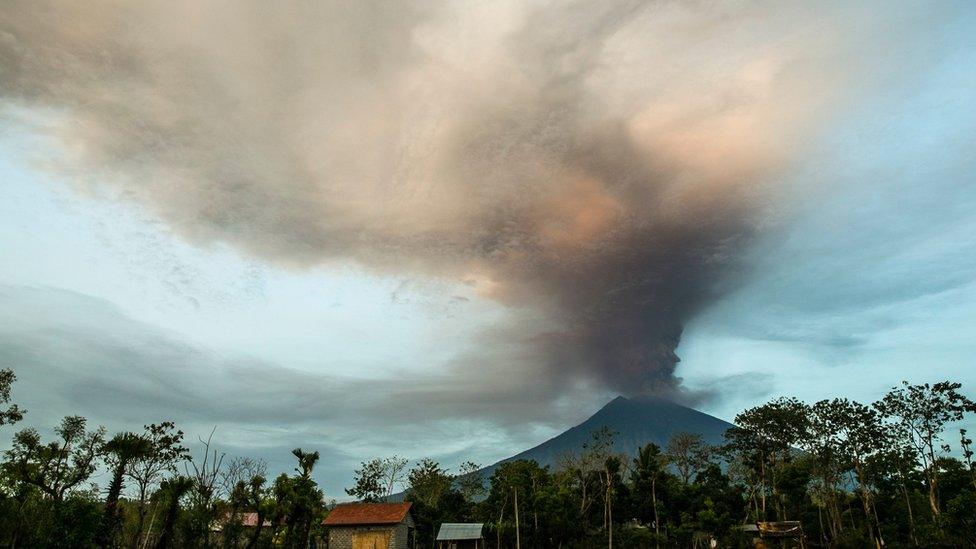
Some of the images coming out of Mt Agung, the volcano in Bali which could be on the brink of a major eruption, have been spectacular. But the pictures also tell the story of what is going on inside, as volcanologist Janine Krippner explains.
Over the last two months Mt Agung has seen increased seismicity. This is the increased fracturing of rocks inside the volcano as magma, a volatile mixture of molten rocks, fluids and gases, moves from deep within the earth right up to the top.
In the past week we have seen thick plumes of steam and ash being belched out, as well as lava glowing at the surface of the crater, and flowing rivers of cold mud down river valleys.
Steam rising up
In most of the first pictures of the mountain two months ago, you wouldn't have been able to tell there was an eruption brewing. That information came to us from the data within the mountain that detected its increased seismicity - and from tremors that began shaking the area.
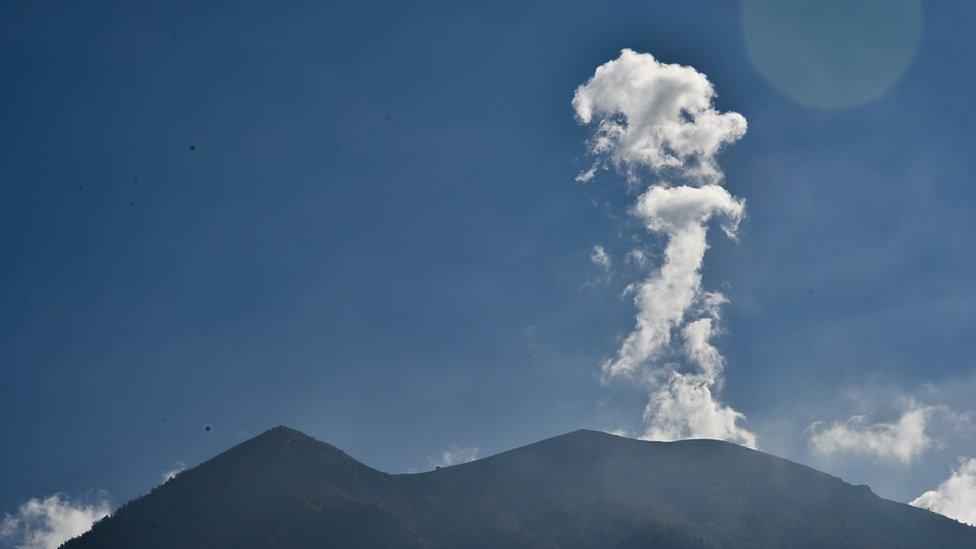
The most you would have seen is steam rising up, which was simply the water inside the volcano heating up and coming out of its surface. The mix of volcanic ash and lava that make up the mountain is like a sponge - and in rainy Indonesia the water soaks onto it and is held there until it gets heated up.
Since then it has been relatively quiet and this is typical for a volcano. These fluctuations in activity are what makes it so hard to predict.
Dense plumes of ash
The volcano first began belching thick ash and steam last Tuesday, its first eruption in more than 50 years.
This was a phreatomagmatic eruption - the expulsion of pressurised steam and rock from hot magma interacting with water inside the volcano. This can lead to a rapid expansion of water into steam causing a huge amount of pressure, which causes an explosion blasting magma, rock, and bits of the crater into tiny pieces of ash.
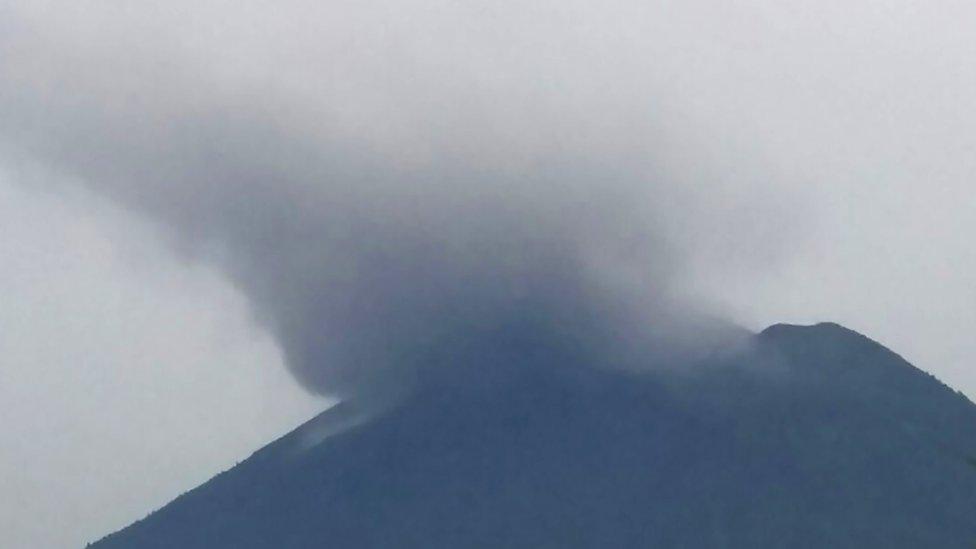
The magma has been moving up from inside and it's breaking rock as it goes along. As the magma moves up, water inside the volcano heats up, steam builds up pressure and it gets to a point where the rock just can't hold it back any more. This is greatly enhanced by magma physically interacting with the water and that is what we are seeing now.
So the magma has moved so high up the volcano there was not enough rock to hold it back, so it is being blasted into tiny pieces of ash and being spread about. Rocks, glass and crystal are flying out of the volcano.
If the eruption columns or plumes of ash are going straight up regardless of wind, it means the velocity is very high. The speed at which it comes out and the amount of ash determines how high a plume can get.
In the 1963 eruption of Mt Agung, eruptions reached as high as 26km (16 miles) above sea level.
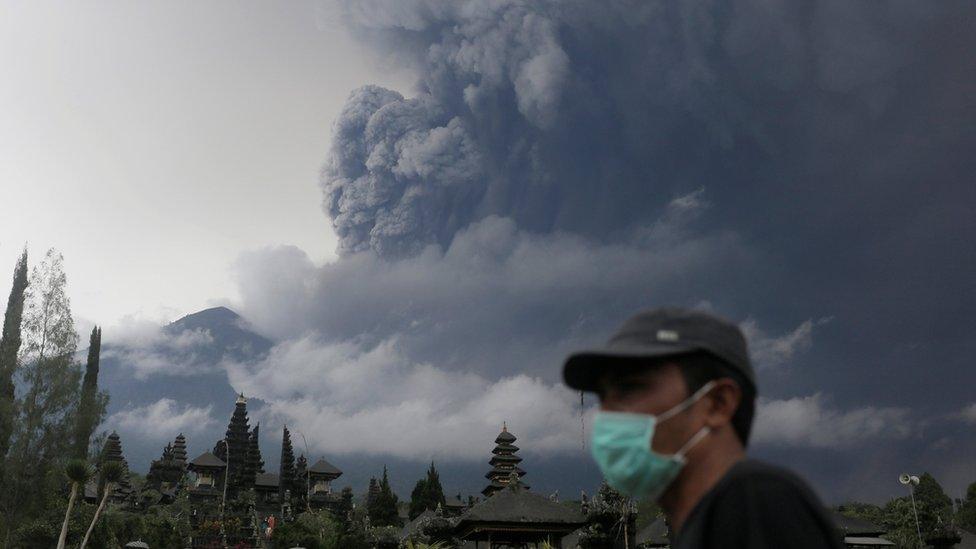
At volcanoes like Agung, the magma can travel 5-15km to the surface from deep within the earth leading to an eruption.
The orange glow of the crater
At night, the orange glow at the surface of the crater is simply incandescence because it is just so hot. The magma is at the surface, and as it reaches the surface it becomes known as lava.
One of the reason the authorities increased the alert level to four is because the magma is getting higher and higher - and these images show exactly how high it is now.
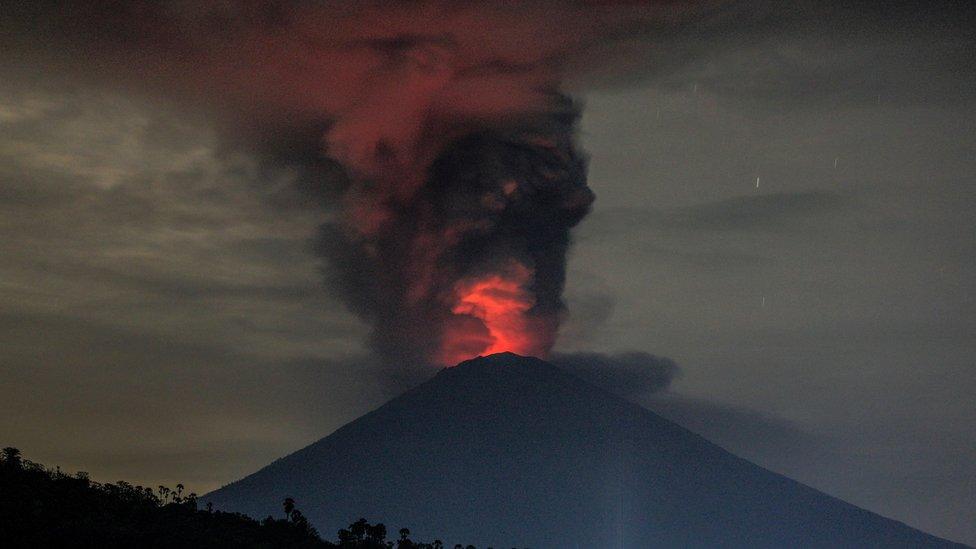
The volcano at sunrise
But the magma is not responsible for the spectacular images of pink and orange hues in the gas at dawn. That is simply the sunrise being reflected by the ash plume - the sun's rays hitting the volcanic ash.
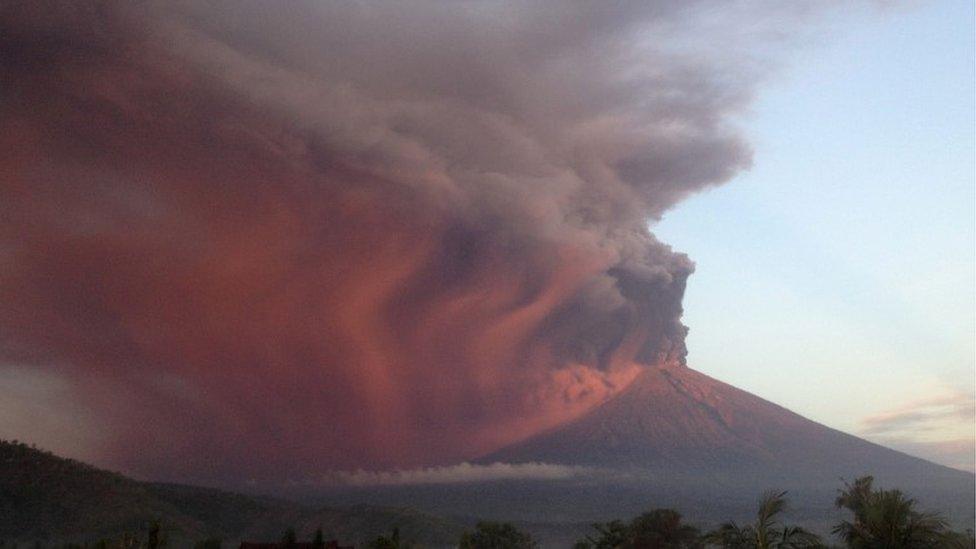
Different shades of ash
You can also learn a lot from the different shades of ash that rise up from the surface of a volcano. It's possible that pictures showing two distinct ash colours could point to two vents in the crater - one that is producing more ash and another that is producing more steam.
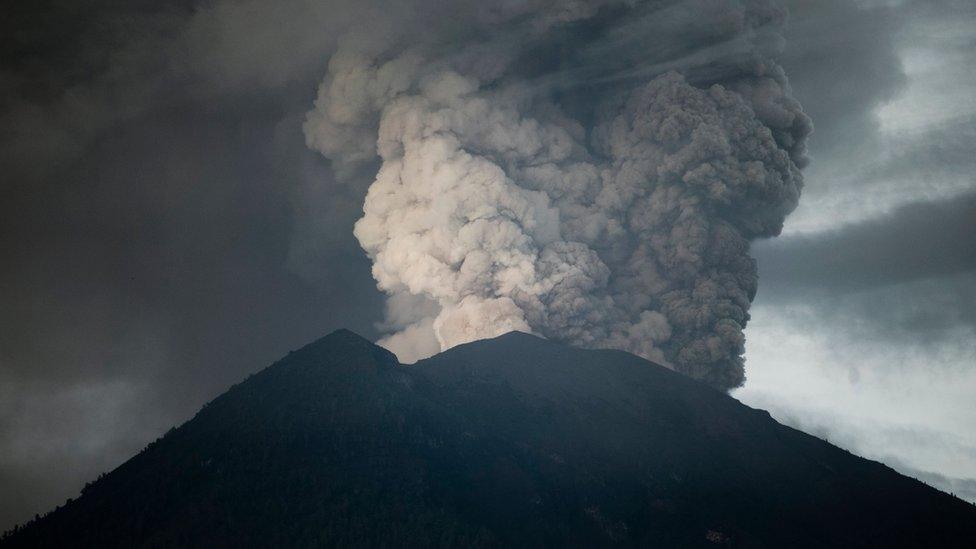
In the 1963 eruption of Mt Agung some researchers thought that it was possible there were two vents.
Dangerous rivers of mud and debris
The very latest images out of Bali point to a new development, which are volcanic mud flows - or lahars. The ash and rock depositing around the volcano when combined with rain can create dangerous fast-flowing rivers with the consistency of water up to wet concrete, and that can move and raise the river level very quickly.
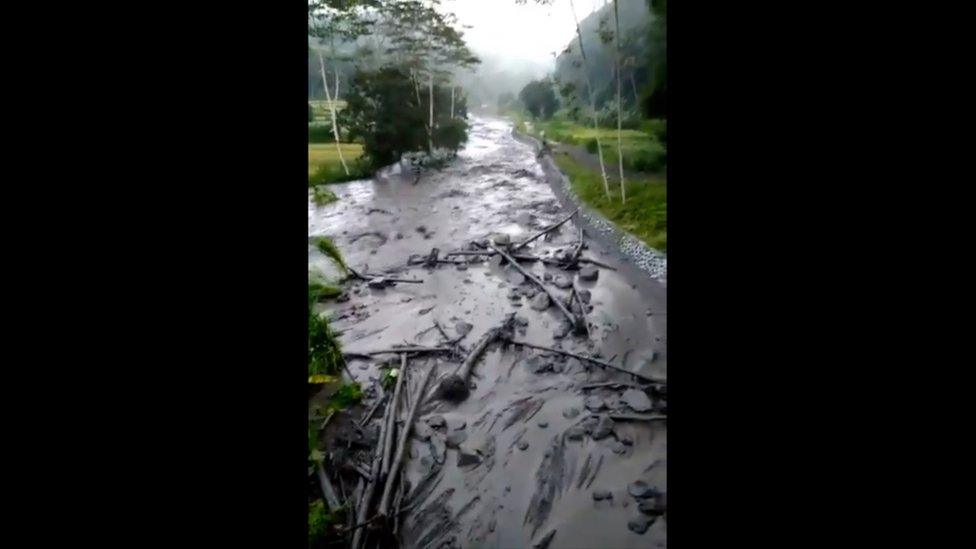
It is not just water, they can carry debris such as boulders and trees and at the moment are something authorities are moving swiftly to warn residents about.
Janine Krippner is a volcanologist in Pittsburgh, USA.
- Published27 November 2017
- Published27 November 2017
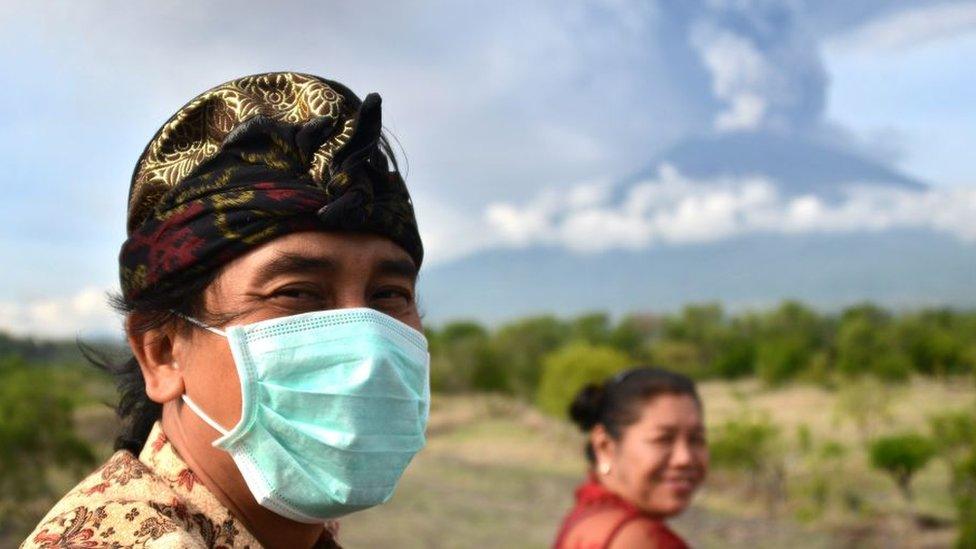
- Published26 November 2017
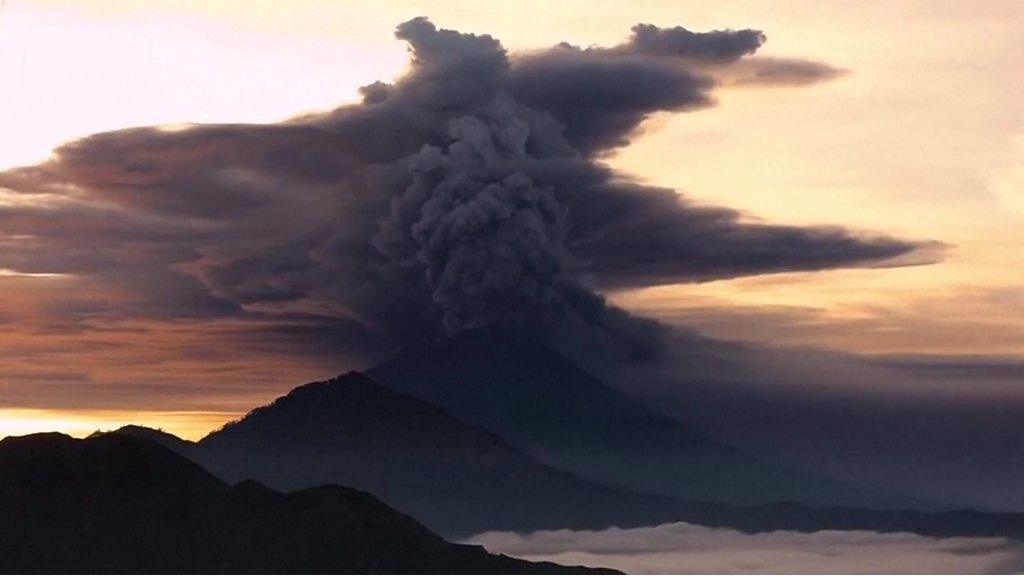
- Published29 September 2017
